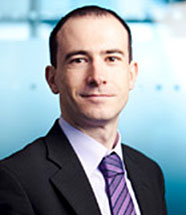

1:30 pm EDT - 4:45 pm EDT
Past Event
1:30 pm - 4:45 pm EDT
1775 Massachusetts Avenue N.W.
Washington, DC
20036
On October 29, the Center for East Asia Policy Studies at Brookings hosted the second annual Brookings-Vrije Universiteit Brussel-Asan Institute conference on trans-Atlantic and trans-Pacific alliances. Following the first conference of the series in Brussels in 2018, the second conference assessed the impact of the Trump administration’s “America First” policy on alliance relations and examined alliances in the age of deepening U.S.-China strategic competition. Below are some of the key takeaways.
Choi Kang of the Asan Institute opened the discussion by asking for an overall assessment of alliance relations after three years of the Trump administration. Thomas Wright, senior fellow and director for the Center on the United States and Europe at Brookings, observed that U.S. foreign policy has been shaped by President Trump’s hostility toward alliances and free trade, affinity for authoritarian strongmen, and discord between the president and the administration. President Trump’s frustration with his pro-alliance advisors was manifested in the replacement of qualified officials with sycophantic or weak personnel. Wright said that the U.S. is at the juncture of “unprecedented systemic risk to the alliances,” and cautioned that the continuation of the current hostility may seriously undermine the soundness of U.S. alliances with NATO, South Korea, and Japan.
James Kim, a research fellow at the Asan Institute, identified deteriorating South Korea-Japan relations as one of the results of the Trump administration’s mismanagement of alliances. He explained that the current administration’s failure to manage the relationship between its two key Asian allies has allowed the surge of nationalism and disputes over history to damage the trilateral arrangement and security framework in East Asia. Although Kim underscored the resilience of the trans-Pacific alliance, he agreed with Wright that the re-election of President Trump, whose administration has been characterized by a transactional approach to its partners, would pose a challenge to the future of U.S. alliance relations.
Luis Simon, professor at the Institute for European Studies of the Vrije Universiteit Brussel (VUB), discussed a common feature of the trans-Atlantic and trans-Pacific alliances: greater connectivity within the larger alliance system. He explained how hybrid alliance structures connect through overlapping bilateral and minilateral frameworks in Europe and Asia to tackle a range of common threats. Simon suggested that this pattern was a response to changing threat environments, more so than the Trump administration’s “America First” approach. According to Simon, Europe has witnessed a proliferation of bilateral security initiatives — such as Nordic defense cooperation, Polish-Baltic minilateral, and Franco-British military framework — to tackle diversified threats. On the other hand, East Asia was moving beyond the hub-and-spokes model to include bilateral defense ties between the different spokes, which had once been much less connected.
Jung Pak, senior fellow and SK-Korea Foundation Chair in Korea Studies at Brookings, identified unconventionality and unpredictability as a consistent characteristic of the Trump administration. This has led allies to adapt and brought about uneasy stability. Although the alliances have proven resilient, Pak advised that the president’s constant criticism has a profound impact on our allies’ consciousness and lends opportunities for China and Russia to exploit the seams of the alliance.
Experts also discussed alliances in the context of intensifying strategic competition between the U.S. and China. Ramon Pacheco Pardo, Korea Foundation-VUB Korea Chair at the Institute for European Studies, opened the discussion on the new normal of U.S.-China rivalry. He asked for perspectives and responses to the great power competition.
According to Lynn Kuok, a senior research fellow at the University of Cambridge, Southeast Asian countries can be persuaded to support U.S.-led efforts to secure a rules-based order, but they do not want to take sides in great power competition. Kuok explained that the region responds to China’s rise by hedging — by broadening and deepening security ties with the U.S. while pursuing economic opportunities with China. She suggested that the intensification of the U.S.-China rivalry limits options for Southeast Asian countries. As the pressure to take a side increases, America’s fickleness and China’s long-term economic clout, despite recent setbacks, play a critical role in determining how Southeast Asian countries position themselves.
Linde Desmaele, a Ph.D. researcher at the Institute for European Studies-VUB, assessed the European response to the U.S.-China competition in three areas: the economy, security, and politics. In the economic realm, American tariffs against certain European countries and Chinese intellectual property thefts make both the U.S. and China problematic partners. Deepening economic competition, therefore, has strengthened the European desire for strategic autonomy. In terms of security, the pressure to choose one side is less salient to Europe because China is not seen as a geopolitical threat as it is in the Asia-Pacific. Politically, while European alignment with the U.S. is logical, the current administration’s ideological disagreement with the EU may move domestic politics away from the U.S. Thus far, Europe has responded by not making a choice.
In Northeast Asia, great power competition poses a more immediate challenge. Shin Beomchul, director of the Center for Security and Unification at the Asan Institute, discussed South Korea’s difficulty balancing between its key security partner and largest trading partner. The challenge comes as China seeks to use its economic prowess to influence South Korea’s political and security decisions — as seen during the deployment of the Terminal High Altitude Area Defense (THAAD) system in 2016. The intensifying U.S.-China rivalry, therefore, is at odds with South Korea’s national interests to strengthen its alliance with the U.S. and maintain peaceful economic cooperation with China.
The panelists further elaborated on the perception of U.S. and Chinese objectives in the region. In Southeast Asia, China’s goal is to claim economic rights in neighboring exclusive economic zones and deny the U.S. access to the South China Sea. Despite objections, Southeast Asian countries respond with a degree of resignation, given the disparity in economic and national power. This situation is exacerbated by a lack of clarity in U.S. strategic objectives and U.S. commitment to the region. In Europe, China’s objective is to neutralize the region using divide-and-rule tactics and prevent Europe from supporting the U.S. On the other hand, the U.S. attitude toward Europe has been informed by the Trump administration’s skepticism as well as U.S.-China competition.
Although the panelists agreed that trans-Atlantic and trans-Pacific allies would choose strategic alignment with the U.S. over China due to shared values and existing security arrangements, Chinese investments will continue to play an important role in countries requiring infrastructure development. In Southeast Asia, for instance, China’s increasing geopolitical influence is received with the region’s reluctant acceptance and increasing alignment.
1:30 pm - 1:45 pm


1:45 pm - 3:15 pm
Moderator

Panelist

3:15 pm - 4:45 pm
Moderator

Panelist



Pavel K. Baev
March 20, 2024

Daniel S. Hamilton, Hans Binnendijk, Alexander Vershbow
February 28, 2024

Adam P. Liff
February 22, 2024